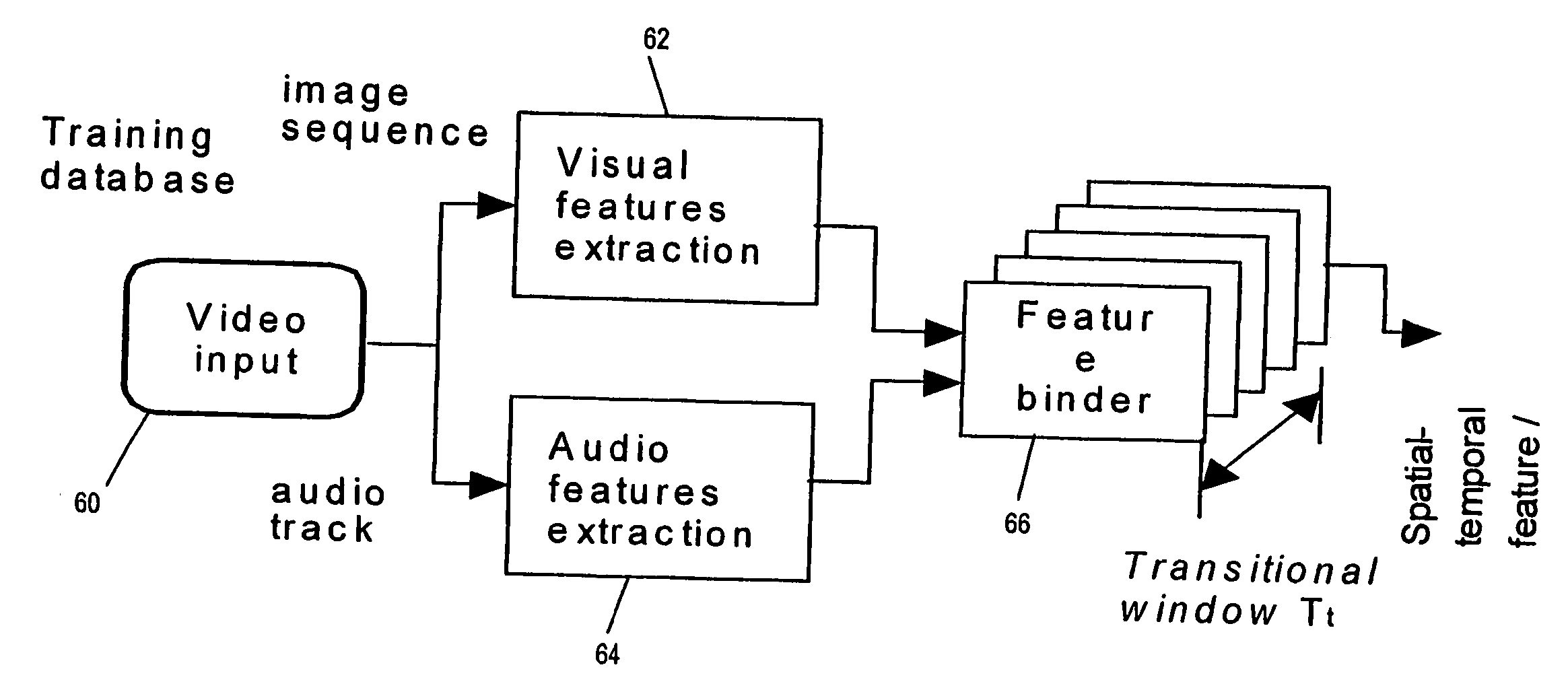Method and system for classification of semantic content of audio/video data
a semantic content and audio/video data technology, applied in the field of audio/video data semantic content classification methods and systems, can solve the problems of not clearly defined, inability to use a combination of many, and within-class feature sample variation, so as to achieve accurate and robust multi-class classification, minimise within-class variance, and maximize between-class variance.
- Summary
- Abstract
- Description
- Claims
- Application Information
AI Technical Summary
Benefits of technology
Problems solved by technology
Method used
Image
Examples
Embodiment Construction
[0070] An embodiment of the invention will now be described. As the invention is primarily embodied as computer software running on a computer, the description of the embodiment will be made essentially in two parts. Firstly, a description of a general purpose computer which forms the hardware of the invention, and provides the operating environment for the computer software will be given. Then, the software modules which form the embodiment and the operation which they cause the computer to perform when executed thereby will be described.
[0071]FIG. 1 illustrates a general purpose computer system which, as mentioned above, provides the operating environment of an embodiment of the present invention. Later, the operation of the invention will be described in the general context of computer executable instructions, such as program modules, being executed by a computer. Such program modules may include processes, programs, objects, components, data structures, data variables, or the l...
PUM
 Login to View More
Login to View More Abstract
Description
Claims
Application Information
 Login to View More
Login to View More - R&D
- Intellectual Property
- Life Sciences
- Materials
- Tech Scout
- Unparalleled Data Quality
- Higher Quality Content
- 60% Fewer Hallucinations
Browse by: Latest US Patents, China's latest patents, Technical Efficacy Thesaurus, Application Domain, Technology Topic, Popular Technical Reports.
© 2025 PatSnap. All rights reserved.Legal|Privacy policy|Modern Slavery Act Transparency Statement|Sitemap|About US| Contact US: help@patsnap.com



